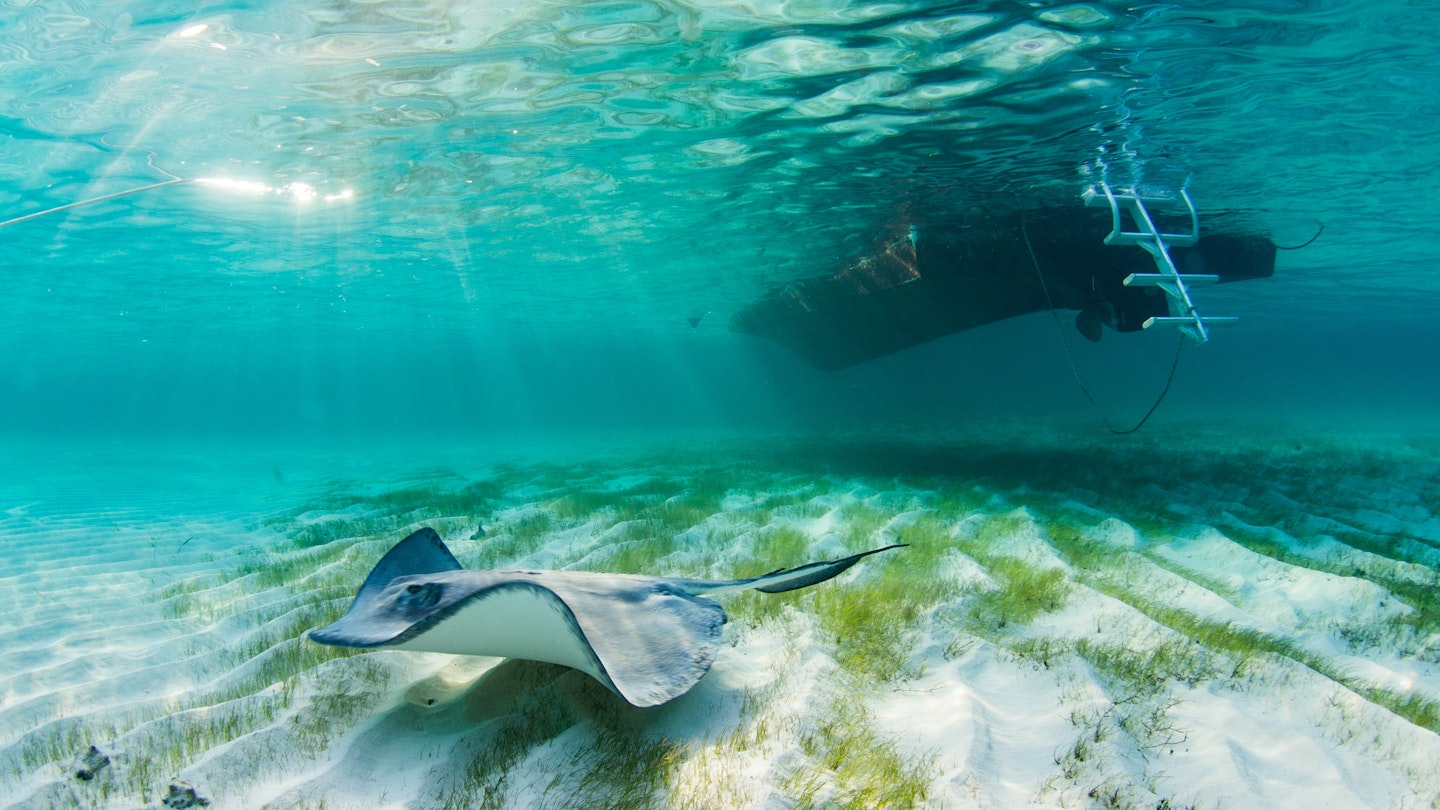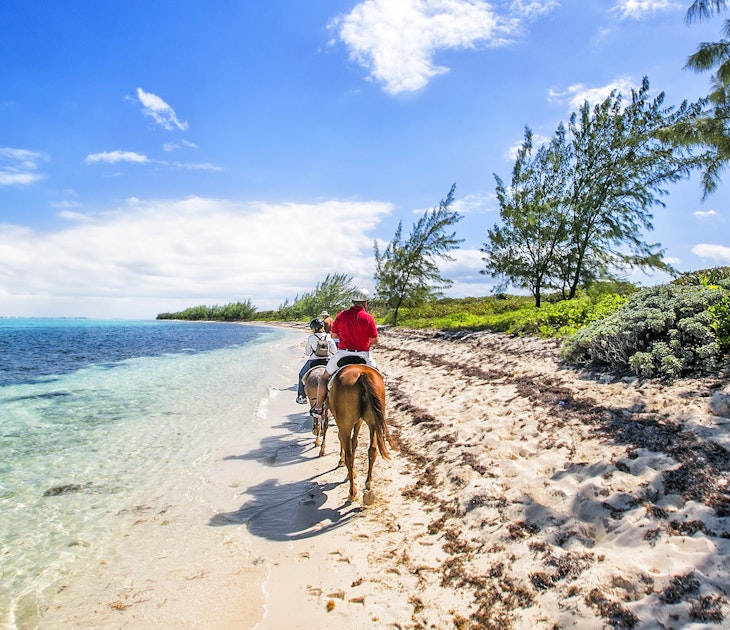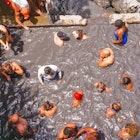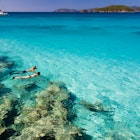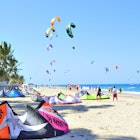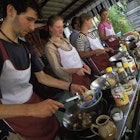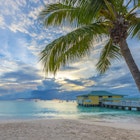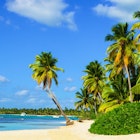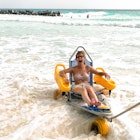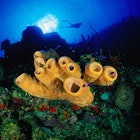Plush hotels and powder-soft sand beaches are just the tips of the iceberg when it comes to the Cayman Islands. The trio of idyllic isles sits in the Western Caribbean and they’re a playground for sun-worshippers and adventure-seekers.
Relaxation is king in this part of the world, with beach resorts, catamaran trips, and sunset cocktails all featuring as standard. Prefer a little more action and adventure? Some of the most interesting things to do in the Cayman Islands make the most of the region’s many natural wonders. A decent chunk of them are on the largest island, Grand Cayman, but you’ll also have no shortage of other activities on Cayman Brac, or the small and serene Little Cayman.

Get up close to extraordinary marine life at Stingray City
Stingray City is easily one of the most popular attractions on the island, and you’ll find it in Grand Cayman’s North Sound, just a short hop from Rum Point.
According to local legend, fishermen used to stop off at this shallow sandbank to gut their catches before heading back to shore. All those guts attracted rays like moths to a flame and, consequently, they still congregate there to this day. The only difference is the fishing boats have now been replaced by yachts and sightseeing vessels.
Despite its popularity, Stingray City is unmissable. Join an organized tour, such as those offered by Red Sail, and jump down into shallow water to witness dozens of these majestic sea creatures gliding below the surface around you. Go mid-week or early morning to share the sandbar with fewer boats.
Climb across Cayman Brac Bluff
The Cayman Islands is a notoriously flat archipelago. In fact, the highest point on Grand Cayman is just 24m (78ft) above sea level! If you fancy gazing out to sea from a slightly loftier location, your best bet is on Cayman Brac.
This is the second-largest of the Cayman Islands and its craggy limestone ridge has long attracted rock climbers and hikers to its shores. Walk along the top of Cayman Bluff or, if you’re feeling brave, abseil down 40m (131ft) of sheer cliff face during an organized climb with Rock Iguanas.
Meet the blue iguanas at Queen Elizabeth II Botanic Park
It’s not just marine life that the Cayman Islands does well. One of the nation’s most iconic indigenous species is the blue iguana (also known as the rock iguana). These endangered creatures are best seen at the Queen Elizabeth II Botanic Park that sits on the sleepy east side of Grand Cayman.
Back in 1990, there were less than 30 of these large lizards left on the planet. A conservation program was set up and that figure has since jumped to over 1000. If you’re lucky, you might bump into some blue iguanas wandering around in the undergrowth. For an almost guaranteed sighting though, check out the blue iguana breeding center at the top end of the gardens where you can peer through small windows into sheltered enclosures.
The park is also teeming with tropical flora and fauna, including some very impressive palms and a few humongous agave plants. Visiting in spring? The Orchid Garden will be a riot of color. There’s also the Cayman Heritage Garden that gives you a detailed idea of what life was like on the islands in centuries gone by.
Explore ancient caves once used as hurricane shelters
Not just great for climbing and hikes, Cayman Bluff also hides a series of incredible caves. Many have been made safe for visitors, including Rebecca’s Cave that’s poignantly named after Rebecca Bodden, a local child who died while sheltering there from a hurricane in 1932. Peter’s Cave on the opposite side of the island is also worth a visit (there are even purpose-built steps leading into it) and it’s still used as a hurricane shelter today.
Only visiting Grand Cayman? There are opportunities for subterranean adventures there, too. A trip to the Crystal Caves in Old Man Bay is easily one of the most interesting places to visit on the island. They’re made up of 100+ ancient caves dripping in spectacular stalagmites and stalactites. Pull on some comfy shoes and join an organized tour to learn the secrets of three of the caves, including their intriguing past as pirate hidey-holes. Just watch out for the bats.

Laze around on Seven Mile Beach
This long stretch of soft white sand lapped by calm, crystalline water is the crowning glory of Cayman’s beaches. Large parts of public Seven Mile Beach are taken over by hotels, holiday rentals and beach clubs. What’s more, you’ll find one of the top things to do on a cruise to the Cayman Islands is to spend a few hours lounging around on the shoreline.
If you’d rather escape the crowds, there’s plenty of space to swim and snooze away from the sun loungers and water sports. Venture to the most northerly end of the beach to find a relatively undeveloped stretch of sand between the Kimpton and Discovery Point Club. The water here is also a lovely turquoise and calm enough for snorkeling.
Seven Mile Beach is additionally one of the best places for nightlife. Most hotels have bars right on the sand, with popular picks being the Royal Palms Beach Resort and Coccoloba at the Kimpton. You could also stroll along West Bay Road for a few pints at cool and casual Craft F&B. Alternatively, hop across the pedestrian bridge to Camana Bay, a contemporary dining and shopping complex with a handful of lively bars.
Enjoy total isolation on Owen Island
Looking for a little solo time? Escaping to uninhabited Owen Island fits the bill. With its wild vegetation and virgin beaches, it’s the epitome of going off the beaten path. The tiny isle is privately owned but open to the public, and just a short distance off Little Cayman’s south coast. While accessible by boat, hiring kayaks from the nearby Southern Cross Club and making your own leisurely way across really adds to the sense of adventure.
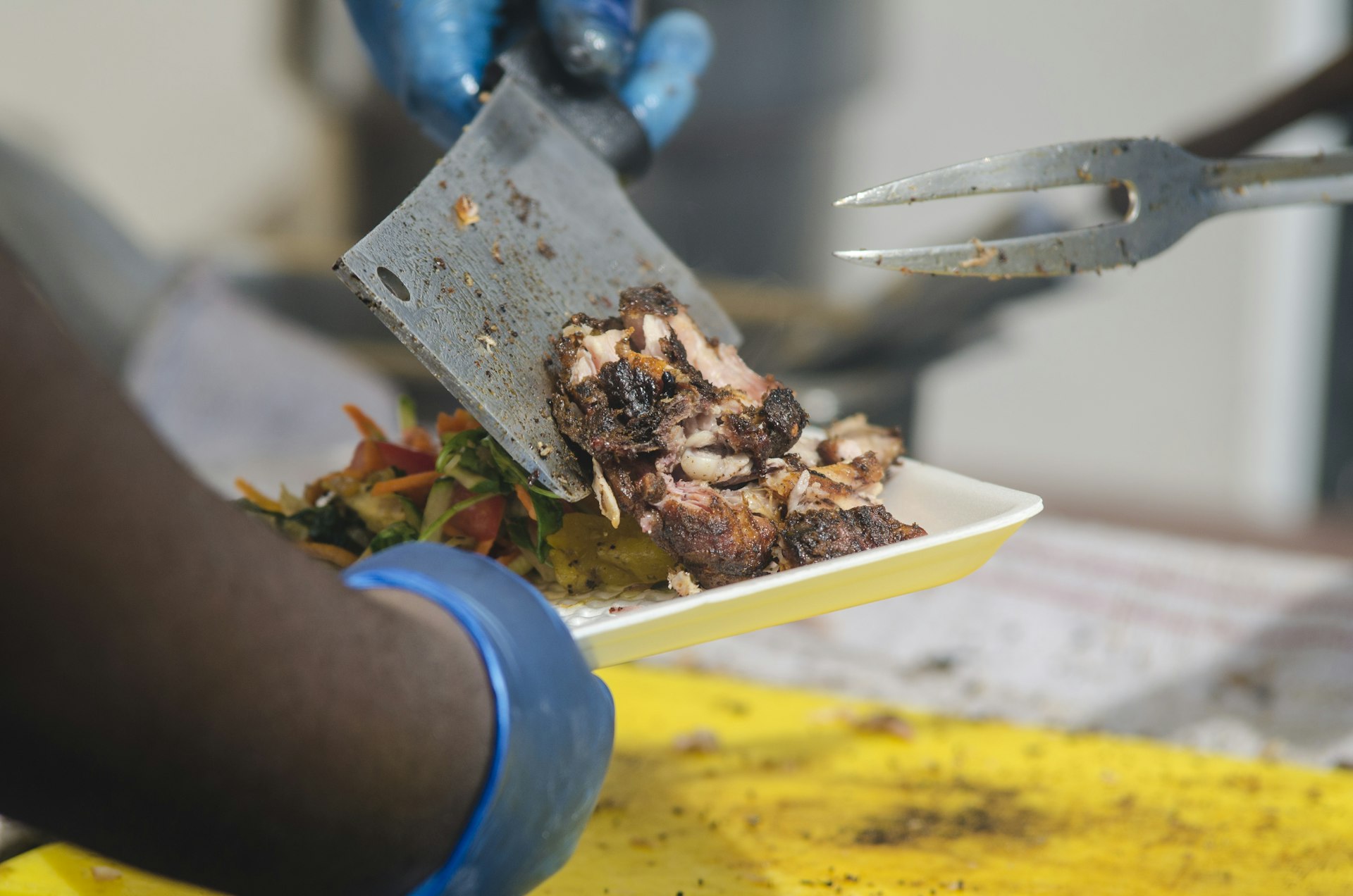
Gorge on great gastronomy
Food lovers rejoice! The Caymans Islands is often referred to as the Caribbean's unofficial culinary capital, with restaurants ranging from flash Michelin-starred restaurants such as Blue by Eric Ripert on Seven Mile Beach to locally-loved takeout places like Barry’s Golden Jerk, which occupies a tiny wooden shack on Cayman Brac.
Enjoying a taste of the Cayman Islands is recommended. Spicy jerk chicken, fresh seafood ceviche drizzled in lemon juice, and sticky cassava cake are all on the menu. Vivine’s Kitchen and Big Tree BBQ number among the best venues for local grub (the latter even serves up traditional turtle stew). There are heaps of places to suit veggies and vegans on Grand Cayman, too. Vivo is known for its coconut ceviche, while Island Naturals Cafe is perfect for sandwiches and salads.
Seek out the elusive Cayman Brac Parrot
Keen bird-watchers will want to keep their eyes peeled for several local species. The most celebrated is the endangered Cayman Brac Parrot that’s a truly impressive sight thanks to its vibrant blue and green feathers. Your best chance of seeing one is at the National Trust Brac Parrot Reserve. Go in the morning or late afternoon when the sun is low and follow the well-worn nature path, gazing overhead at the trees as you go to spot these well-camouflaged birds.
Study up on the local history
Like all Caribbean nations, Cayman has a rich heritage stretching back several centuries. Before visiting historic sites like Pedro St James, do some background reading at one of the region’s museums.
Each island has its own local history venue. The largest is in George Town, the region’s capital on Grand Cayman, that’s postcard-perfect with its candy-colored buildings and harbor views. The Cayman National Museum has a series of exhibits on the islands’ natural and human history, including an entertaining visual show that summarises their eclectic cultural heritage.
Elsewhere, the free-to-enter Cayman Brac Museum has a small yet intriguing collection of items relating to local life, plus a great display on the devastating 1932 hurricane that ravaged the island. Little Cayman Museum also hosts particularly good exhibits on local ecology and underwater wildlife.
Dive in the deepest part of the Caribbean Sea
Dive schools are two a penny in the Cayman Islands - and that’s all down to the region’s breath-taking underwater sites. Always wanted to swim through the hull of a ship? Cayman’s shorelines host over 200 different wrecks!
The Kittiwake - a former USS submarine vessel - sits just off Seven Mile Beach and was purposefully sunk in 2011 to create an artificial reef. Cayman Brac’s Captain Keith Tibbets Wreck - a former Russian frigate - has a similar story. Both are now crusty with bright corals and provide brilliant natural habitats for huge shoals of grouper fish, in addition to rays, turtles, eels and barracudas.
Let’s not forget Little Cayman, either. It sits close to the Cayman Trench - the deepest point in the Caribbean - and is the location of Bloody Bay Marine Park. The rather gruesomely named reserve is one of Cayman’s most unmissable dive sites thanks to the Bloody Bay Wall. Plunging an unfathomable 300m (980ft) below the ocean’s surface, it’s home to awesome anemones, fantastic fan corals and vast schools of fish in all shapes, shades and sizes.
Take a tour of the Central Caribbean Marine Institute
If you like to give back during your travels, a trip to the Central Caribbean Marine Institute (CCMI) in Little Cayman is ideal. It conducts vital research on the region’s reefs, in addition to running various marine conservation projects. As well as arranging a tour of the center, keen divers might want to plan a dive trip alongside a CCMI underwater researcher.

Embrace Cayman culture at a festival
Caymanians love to party, so it’s no surprise that the nation’s calendar is littered with festivals.
Pirates Week Festival is the pick of the bunch. It takes place in November and attracts visitors from far and wide. Sip on free-flowing rum punch and mingle with actors dressed as fearsome buccaneers (look out for Jack Sparrow’s doppelganger). Various events are hosted throughout the week across all three islands. The main one is a procession through George Town which ends with the Governor of the Cayman Islands being captured and made to walk the plank of a replica pirate ship.
Foodies might prefer to visit in January when Taste of Cayman, one of the biggest food festivals in the Caribbean, occurs. Beach BBQs, culinary masterclasses and pop-up stalls from Grand Cayman’s best restaurants feature on its mouth-watering program. And, last but not least, there’s Batabano. This fun festival happens in May and it’s a lively celebration of Caymanian culture, complete with live calypso music and a parade featuring 100+ revelers garbed in colorful (and often richly feathered) costumes.
You might also like:
Conch, callaloo, cassava: a taste of the Cayman Islands
Alternative Caribbean: 6 unique experiences in the Cayman Islands
Seven unmissable dive sites in the Cayman Islands

